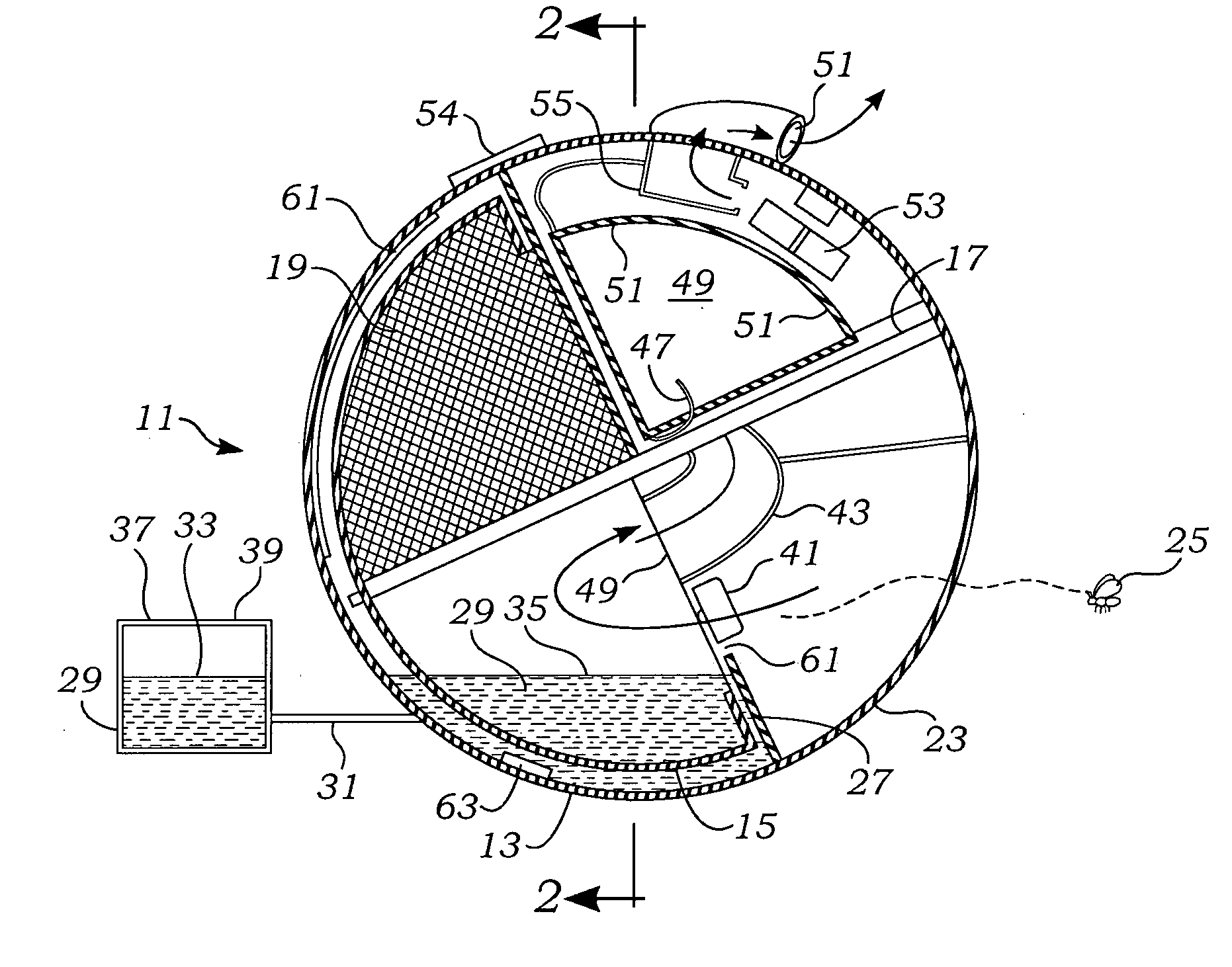Mosquito water trap
a technology for mosquitoes and water traps, applied in the field of appliances, can solve the problems of mosquito eggs and larvae being trapped and killed independently, and achieve the effects of preventing overfilling, reducing energy consumption, and reducing energy consumption
- Summary
- Abstract
- Description
- Claims
- Application Information
AI Technical Summary
Benefits of technology
Problems solved by technology
Method used
Image
Examples
Embodiment Construction
[0024] The first embodiment of the invention illustrates the principle of killing larvae by drying, and a description is best begun with reference to FIG. 1. In the drying method, any mosquito egg rafts which are laid in a defined volume of water are automatically filtered out slowly over time to kill any larvae present by drying. The overall geometry of a trap 11 illustrated is spherical, but any geometry which permits energy efficient turning is acceptable. A housing 13 supports a bowl which is hemispherically shaped. The bowl 15 is supported on a shaft 17 and is motorized slowly to rotate about the shaft 17 every few days. The bowl 15 is divided into segments by a series of mesh or screen 19 walls which permit water to move freely from segment to segment, but which will hold all solid matter larger than the screen within the segment.
[0025] As the bowl 15 turns over a period of days, any mosquito larvae within a small body of water 21 at the bottom of the tilted bowl will have be...
PUM
 Login to View More
Login to View More Abstract
Description
Claims
Application Information
 Login to View More
Login to View More - R&D
- Intellectual Property
- Life Sciences
- Materials
- Tech Scout
- Unparalleled Data Quality
- Higher Quality Content
- 60% Fewer Hallucinations
Browse by: Latest US Patents, China's latest patents, Technical Efficacy Thesaurus, Application Domain, Technology Topic, Popular Technical Reports.
© 2025 PatSnap. All rights reserved.Legal|Privacy policy|Modern Slavery Act Transparency Statement|Sitemap|About US| Contact US: help@patsnap.com



